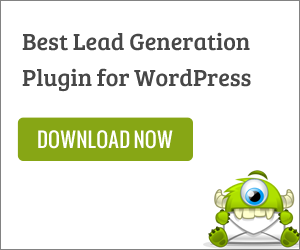Back when social media marketing was still relatively new on the scene, there were cries of it meaning that email marketing was dead.
This certainly was not, and never has been the case, and savvy businesses and organisations are using both to not only communicate with – but convert – their online communities.
Here are eight ways you can use both social media AND email marketing to succeed online.

1. Include links to your social media accounts in your email campaign templates
A simple way to remind your email subscribers of your social media accounts (and to follow them) is to include the links in your email campaign.
Don’t confuse them though by giving them too many things to consider. Remember the primary purpose of the email campaign is the message within the campaign. Your social media accounts should be secondary, so it’s best to keep them in the footer.
Alternatively if you have started a new social account on a particular channel, or want to draw attention to one, your message – or part of your message – within the email campaign may be something like: “We’ve just started using Instagram to share behind-the-scenes updates! Follow us at @yourhandlehere to check out what we get up to…”
2. Include social sharing in your email campaigns
Different to including links to your social media channels, many email marketing systems offer the option to include social sharing links within your email campaigns.
This allows your subscribers to easily share the email itself on popular social media channels such as Facebook and Twitter, which helps others to see your updates.
Include these options in your email campaign templates.
3. Encourage your social media community to subscribe to your email campaigns
While each of your marketing channels should have their own strategy, I’m a big fan of cross-referencing them where there may be an overlapping interest in the audiences.
Remember to occasionally post updates on your social media channels encouraging your followers to subscribe for email updates, and make sure you offer a compelling reason for what they can expect.
I like to do this within the week before sending an email campaign so that new subscribers receive their first update soon after subscribing.
Many email marketing systems (such as MailChimp) also offer subscription form integrations, such as easily adding a custom subscribe tab to your Facebook Page.
4. Use Facebook Lead Ads to encourage new email subscribers
Facebook Lead Ads are a great way to get new email subscribers via Facebook. If you aren’t familiar with them, Lead Ads are simple forms that pre-fill with the Facebook user’s data, making them super easy to fill out.
This works really well for Facebook, as people often don’t like leaving Facebook to complete a form (and Facebook doesn’t like people leaving Facebook).
This approach allows you to easily gather details from interested people and import them to your email marketing system.
Please note: you must have a privacy policy on your website to use Lead Ads. And you really should have one anyway.
5. Share your email campaigns via your social media accounts
Now I don’t necessarily mean the automated sharing to Facebook and Twitter than many email marketing systems offer… This can work okay, but as with many automations, they can feel a bit awkward as what makes a good subject heading doesn’t always make a good update description. The preview links from email campaigns aren’t always the best either.
I prefer to leave it a few days or a week after the email campaign send (so that your email subscribers are getting the goods first) and then share a screenshot image from the email campaign (sized appropriately depending on the social channel) with a suitable description about the campaign and the link to read the full campaign.
6. Create a Facebook Ads Audience with your email subscriber list
Did you know you can upload your email subscriber list to Facebook and it will match up the email addresses with people’s Facebook accounts? (providing they use the same email address).
It’s a great way to not only target Facebook ads at your subscribers (e.g. to encourage them to Like your Facebook Page if they don’t already, or target specific ads or posts at them) but also find other audiences on Facebook who are similar to your existing subscribers, through Facebook Ads Manager’s “Lookalike” audience feature.
You could combine this technique with number four above to attract new email subscribers through Facebook who share similarities with your existing subscribers.
7. Summarise your recent top performing social media content in an email campaign
Your strategy for using social media and email marketing may be to share more frequent updates on your social accounts (e.g. daily or every 2-3 days), coupled with a monthly newsletter-style email to your subscribers.
While you may have an overlap with those who follow your social accounts and your email subscribers, not all of them may see all of your social media updates.
I find a great way to choose the best updates for newsletter-style emails is to look at the content you have recently shared on your social media channels that has received the best response (through engagement or clicks).
This provides the social proof that people have enjoyed it, so why not share it with more people and provide them with the cream of your content conveniently in their inbox!?
8. Keep your social updates social and use your email campaigns for sales
Email remains a powerful tool for encouraging action and conversions.
Selling on social media can be difficult, as people are often in the social mindset and don’t always want to leave it (or the channel) to go and do something else.
This is where effective email campaigns are the perfect complement to your social media activity. People are often more used to taking action on email, as it’s not somewhere you generally sit and browse, rather you receive information and do something with it.
We often encourage using the Pareto Principle – or 80/20 rule – for social media marketing; keep 80% of your updates non-sales, and only 20% sales, or four non-sales updates for every one sales update.
Another strategy is to keep your social updates completely social, i.e. tips, advice, behind-the-scenes, useful resources, and any other content related to your brand/product/service, that’s not directly “selling” it.
Then use your email campaigns to provide your great sales offers.
Obviously this works best if there is an overlap with your social media community and email subscribers, but if you implement the above tips – you should!






















